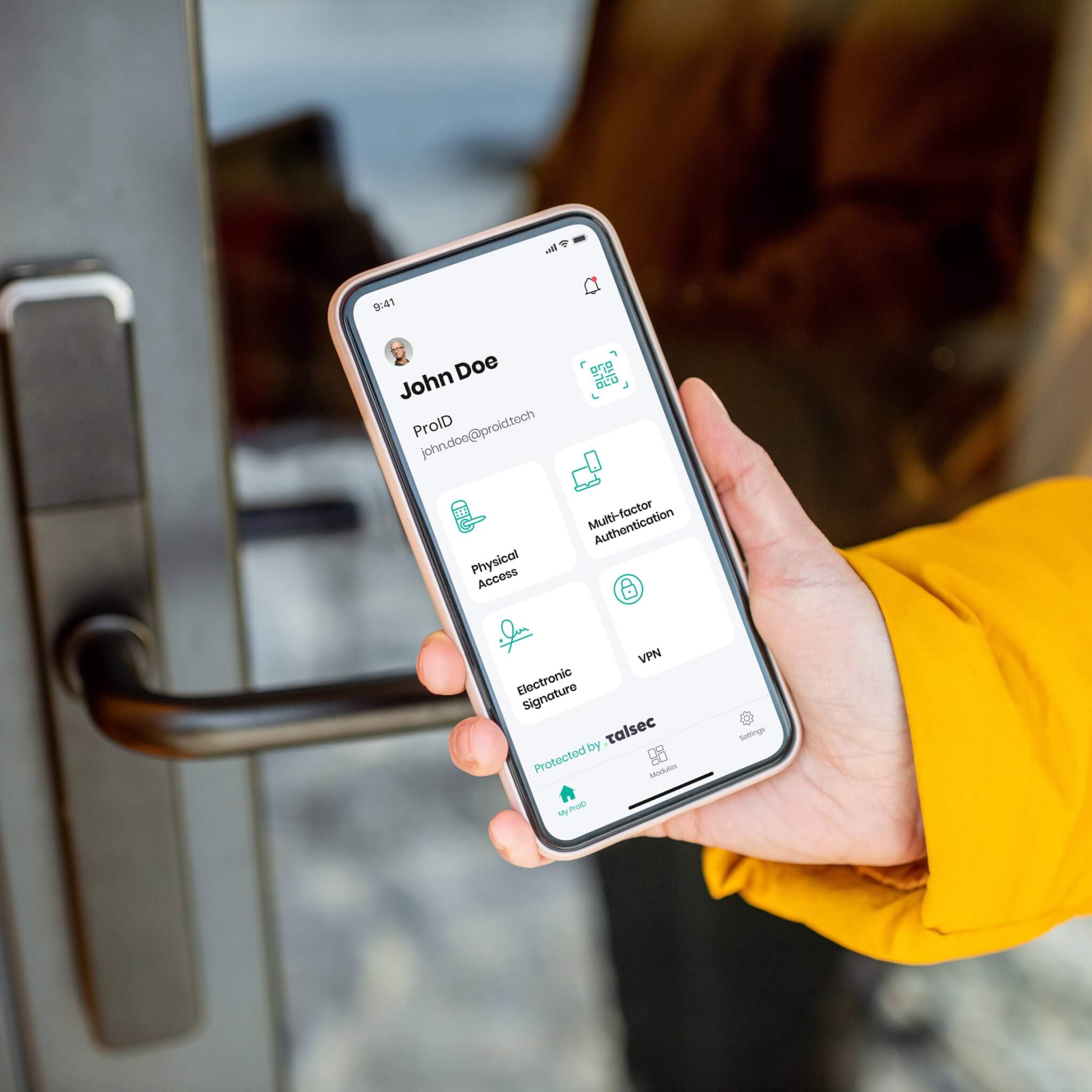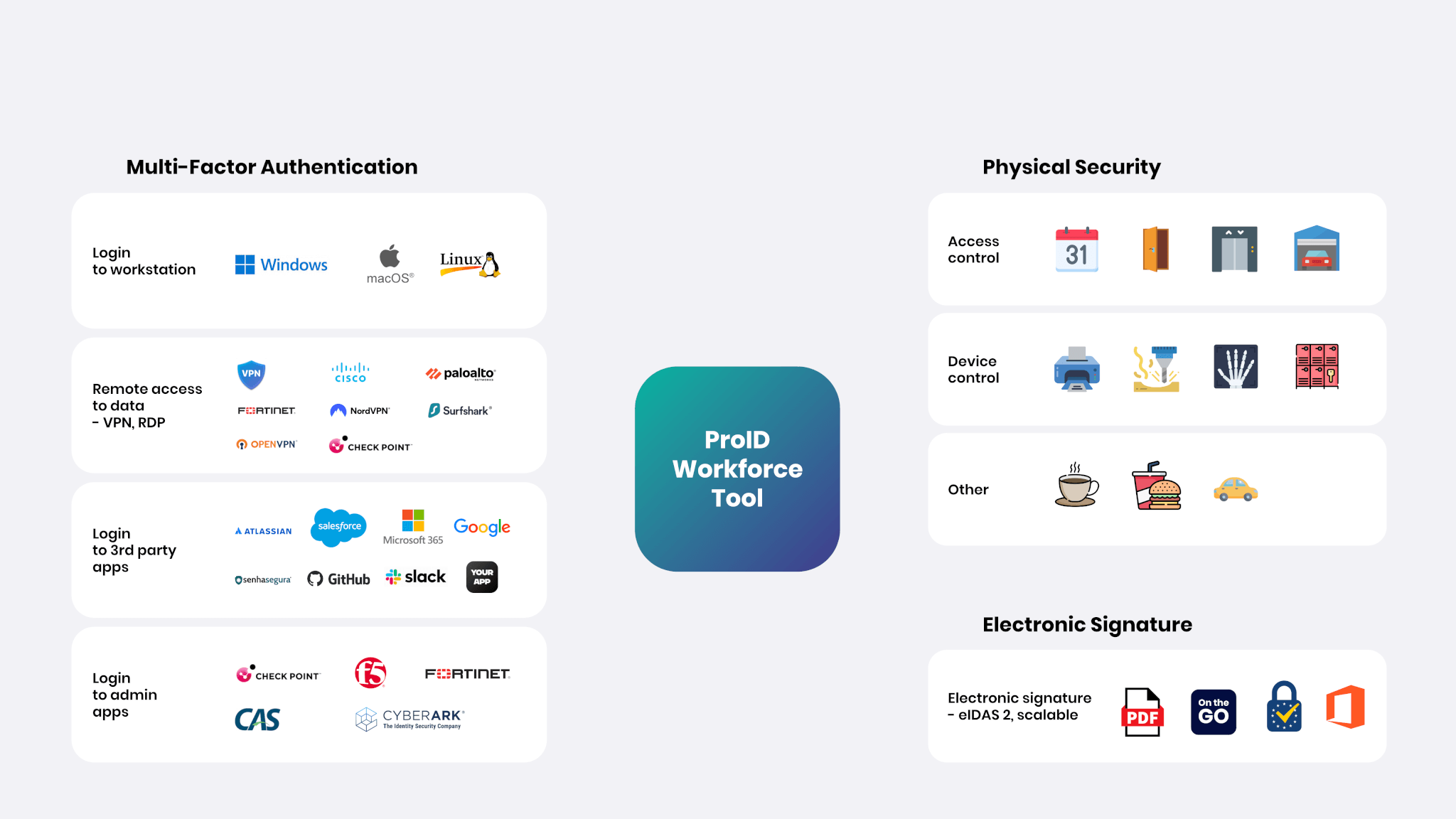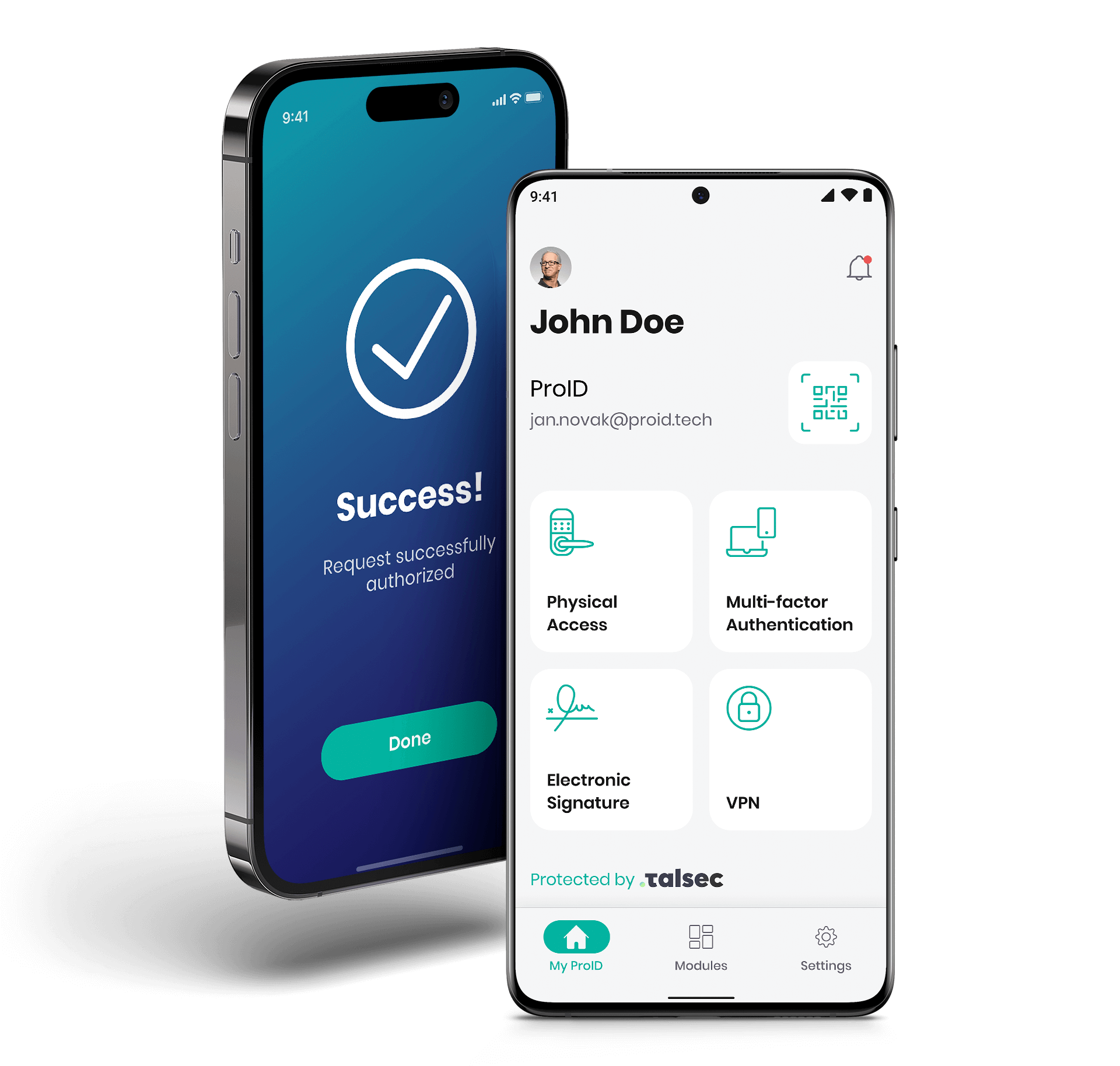The ProID platform redefines SSO by combining single sign-on functionality with advanced identity management, security, and usability features.

What is Single Sign-On (SSO)?
Single sign-on (SSO) solutions enable users to access multiple applications, databases, and systems using a single set of credentials. By centralizing authentication, SSO simplifies the login process, enhances user convenience, and reduces the workload for IT administrators. These solutions integrate diverse applications and route all logins through an SSO server, creating a seamless experience for employees while maintaining robust security.
Core Features of SSO Software
- Unified Access Management
- Streamlined User Experience
- Centralized Authentication
- Enhanced Security
- Integration with Business Applications
ProID: A Next-Generation SSO Platform
ProID is more than just an SSO solution — it’s a comprehensive platform for workforce identity management. By integrating SSO with MFA, VPN/RDP access, physical and logical identity, and e-signature functionality, ProID offers unparalleled security and efficiency. Its ability to centralize identity and access management while simplifying authentication processes makes it an invaluable tool for modern organizations.
Why ProID Stands Out in the SSO Space
- SSO via Mobile App and Smart Cards
- Integrated Multi-Factor Authentication (MFA)
- Comprehensive Workforce Identity Managemen
- E-Signature Integration
- Secure Remote Access
- Scalable Integration
- User-Friendly Dashboards and Navigation

Possibilities of using ProID tools


Why choose ProID Single Sign-On Solution
ProID not only meets these criteria but goes beyond by integrating advanced MFA, physical/logical identity, VPN/RDP access, and e-signature capabilities into a single platform. This holistic approach empowers businesses to manage their workforce identities securely and efficiently, making ProID the ultimate choice for organizations seeking an all-in-one authentication and identity management solution.
- Allow users to access multiple applications or databases with a single login.
- Automate authentication processes.
- Centralize authentication servers for consistent access management.
- Provide secure access to applications and data.
- Integrate with business-critical applications and systems.
Are you interested in our solution? Contact us

